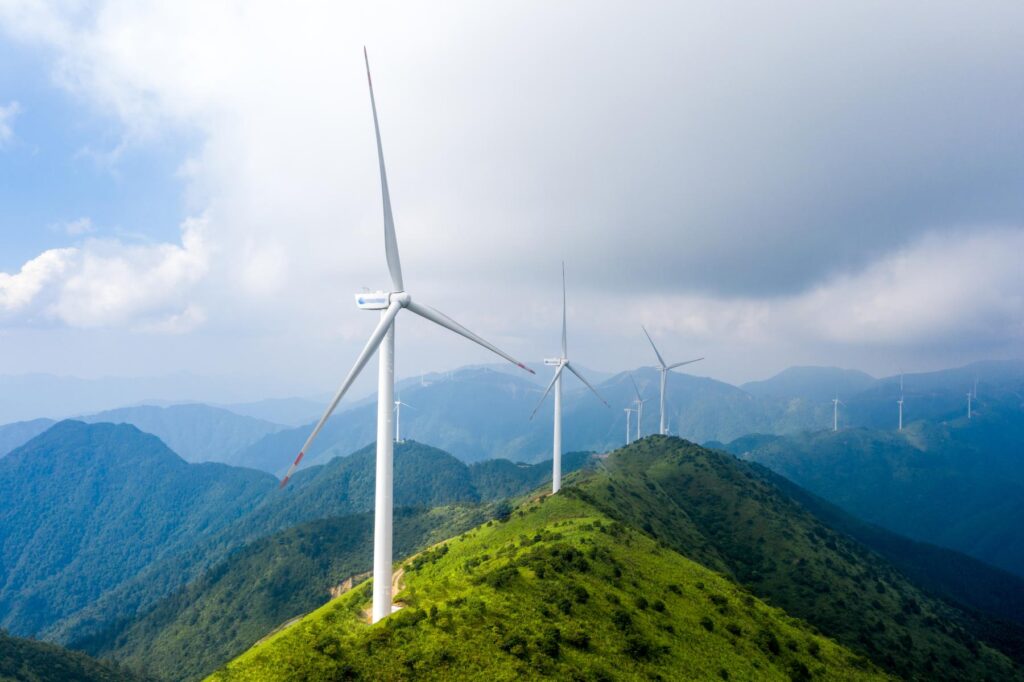December 1, 2022
3:00 pm
Venue
Hodson 210
Note: This seminar is being organized and hosted by the JHU Department of Mechanical Engineering (MechE). ROSEI is sponsoring the seminar.

Title: The complex story of how wind turbines affect near-ground properties
Abstract: Wind energy has been growing steadily in the U.S. and worldwide in the past decades. As wind farms are increasing in size and number, however, concerns are rising about possible undesirable effects of wind turbines near the Earth’s surface, in particular on surface temperature. The mechanism generally proposed is that turbulence generated in the wind turbine wakes enhances vertical mixing near the ground. Wakes are plume-like volumes downwind of wind turbines that are characterized by lower wind speeds (i.e., a wind speed deficit) and higher turbulent kinetic energy (TKE) than the undisturbed upwind flow.
Here we study vertical mixing in the wakes of wind turbines using both observations and simulations.
The observational component is the VERTical Enhanced miXing (VERTEX) field campaign in late summer 2016, during which we measured near-surface turbulent fluxes, wind speed, temperature, and moisture under and outside of the wake of a wind turbine located near the shore in Lewes, Delaware. To further understand wakes of single versus multiple turbines (i.e., overlapping wakes), we conducted large-eddy simulations (LES) with the Weather Research and Forecasting Model (WRF-LES), with the turbine modeled as a generalized actuator disk.
We report that atmospheric stability strongly controls the temperature response to the wake, with warming observed in stable conditions, slight cooling under unstable conditions, and slight warming or no change under neutral conditions. The best measure of stability in the field is found to be the temperature lapse rate between hub height and the ground.
The second finding is that vertical mixing near the ground is not enhanced by wind turbine wakes. In VERTEX, friction velocity, TKE, and wind speed are found to be reduced near the ground under the wake, while sensible heat flux and moisture are not significantly affected by the wake. The LES results also indicate a reduction of vertical momentum flux below single and overlapping wakes. As such, enhanced vertical mixing cannot be the mechanism responsible for the temperature changes.
The third finding is that the mechanism that causes the temperature changes near the ground in the presence of wind turbine wakes is the vertical convergence (or divergence) of turbulent heat fluxes. Under stable conditions, the enhancement of the downward turbulent heat flux in the rotor area and the lack of change in surface heat flux cause convergence below the rotor, which induces warming. Vice versa, under unstable conditions, the enhancement of the (weak) upward turbulent heat flux in the rotor area and the lack of change in surface heat flux cause a weak divergence below the rotor, which induces a slight cooling.
Lastly, a wind turbine wake cannot be fully characterized just by the wind speed deficit, because added TKE does not behave like the wind speed deficit. In other words, the wake has a “dual nature”, with both wind speed deficit and added TKE being necessary to fully characterize it.
Bio: Dr. Cristina L. Archer is the Unidel Howard Cosgrove Career Development Chair in the Environment and a Professor in the Department of Geography and Spatial Sciences and in the Mechanical Engineering Department of the University of Delaware. Dr. Archer is the Director of the Center for Research in Wind (CReW), which focuses on wind energy, in particular offshore, and its integration in the electric grid. She earned a B.S. in Civil and Environmental Engineering from the Politecnico di Milano (Milan, Italy) in 1995, an M.S. in Meteorology from San Jose State University in 1998, and a Ph.D. in Civil and Environmental Engineering from Stanford University in 2004. She was a Postdoc there in 2004-2005 and then worked as an Atmospheric Modeler in the air quality district of San Francisco in 2005-2007. Dr. Archer joined the Carnegie Institution for Science in 2007 as a Research Associate. She was an Assistant Professor in the Department of Geological and Environmental Sciences of the California State University Chico during 2008-2011. She joined the University of Delaware in 2011. Dr. Archer’s research interests include wind power, meteorology, air quality, climate change, numerical modeling, and computational fluid dynamics.
